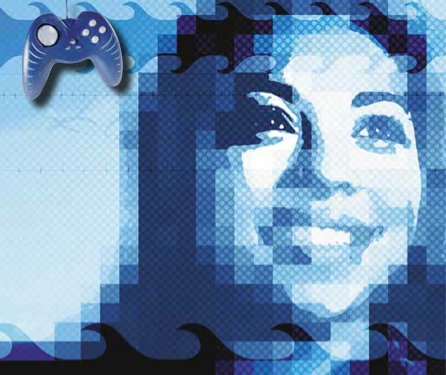 Since I am always looking at trends in relationship to new business development opportunities, I was recently struck by the concept and potential for human digitization.
Since I am always looking at trends in relationship to new business development opportunities, I was recently struck by the concept and potential for human digitization.
This concept is more than a socially interactive experience on Twitter, Facebook or sharing via YouTube. Human digitization is about taking consumer electronics to a new level that is focused on the consumer experience.
Over the past 24 months there has been a steady movement towards greater physical interaction. There was the accelerometer in the iPhone that transformed a racing game into a more physical experience. But it was Nintendo’s Wii that ushered in the era of gesture and body control that made gam- ing a truly immersive experience—by mov- ing game players, young and older, off of the couch. Playing tennis in the comfort of one’s home became a truly immersive experience.
Similarly, one of the hot-sellers during the holiday season was Microsoft’s Kinect body control for the popular Xbox 360 game console.
At the 2011 International CES and other events, we have seen a dizzying array of product introductions across a variety of sectors that is shifting the control of technology functions away from buttons and switches to simple touch and talk controls. These changes in device interaction have the potential for fundamentally changing the social, health and business landscape.
Haptic Control
Touch and finger control is catching on when it comes to smartphones, tablets and other devices. With the move of a hand, one can instantaneously zoom in and enlarge type for easier reading, editing copy, cropping images or reordering or reorganizing documents.
As an extension of touch controls—pressure control is at the cusp of unleashing a range of new business opportunities, particularly in relation to the potential onslaught of products and services aimed at aging boomers. These products with embedded sensors have the ability to know if someone is lying in bed or sitting in a chair too long. Is mom having a problem or just sleeping in? Is dad get- ting enough exercise? Many of these products have remote communications capabilities that enable boomers to independently ‘age in place’—while putting their children at ease.
In the CE business, products with other types of sensors for home security applications have been around for a while and enable the light to automatically turn-on when one enters a driveway or room, or effortlessly adjust the room temperature or music to one’s preset preferences.
Similarly, devices enabled by voice-control and commands are emerging particularly in relationship to driver safety. Smart technology also is being touted by carmakers like Ford, that has shown an ultrasonic car with blind spot detection and a voice activated audio system. These features are particularly relevant to an older person who might not be able to turn their neck to the same degree as their grandson. I recall seeing a demonstration by Toshiba of a voice-controlled TV more than a decade ago that even made an appearance on the Johnny Carson show.
The New Gold Rush
The combination of the focus on home entertainment and an aging population gives new meaning to human digitization—and opens the doors to a new gold rush for many who are innovative and can deliver solutions pertinent to health, independence and quality of life. But there are challenges and pitfalls. Among them is that boomers have signaled that they are going to be very different seniors.
Stay tuned for more about human digitization, digital transformation and aging boomers. Comments?
Contact the author at: susan@c4trends.com
